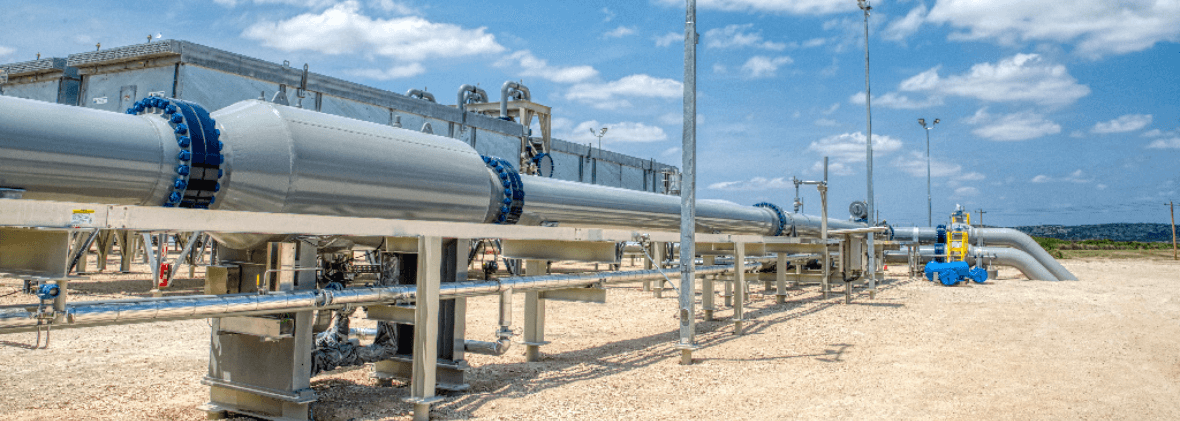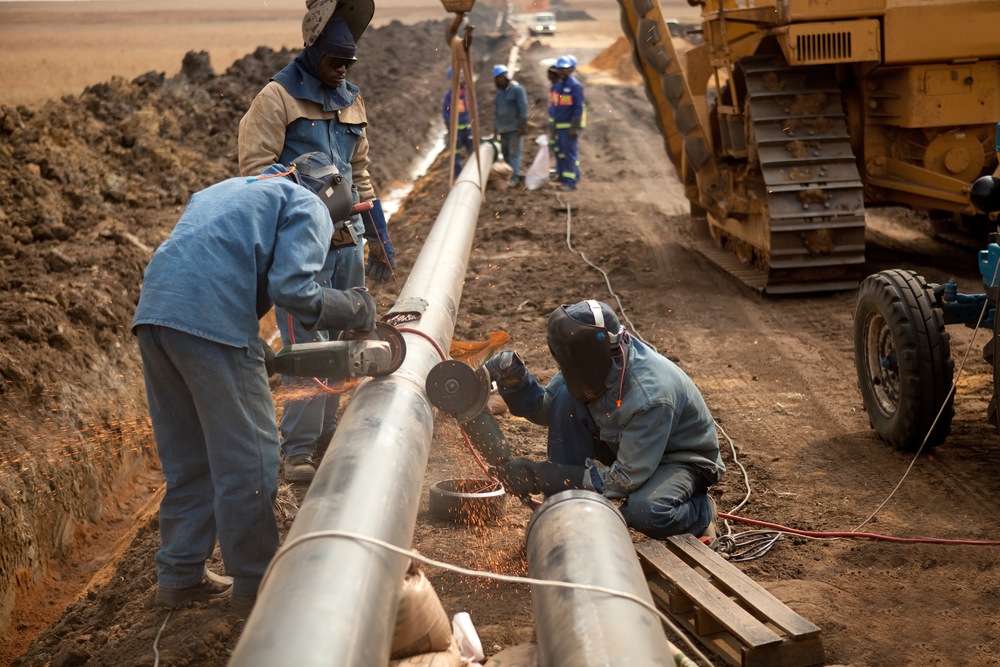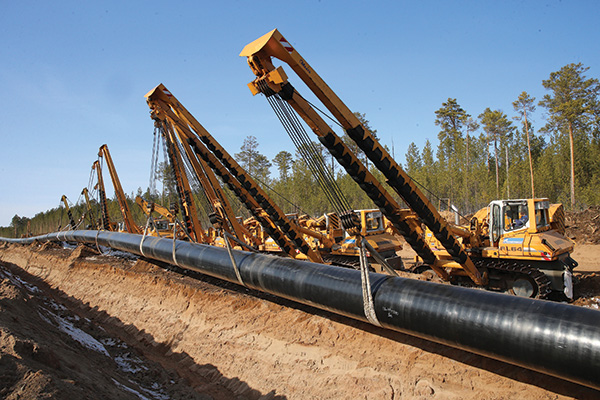Midland pipeline construction company: How construction strategies affect long-term efficiency
Wiki Article
Understanding the Key Functions of Pipeline Providers and Their Impact on Performance
Pipeline services play a crucial function in numerous industries, influencing operational performance noticeably. Key functions, such as sophisticated monitoring modern technologies and maintenance techniques, are crucial for reducing downtime. Furthermore, regulatory conformity assurances safety and environmental security. The interaction in between layout, infrastructure, and economic factors can complicate these processes. Understanding how these components influence general efficiency raises crucial questions about best methods and future growths in the area.The Role of Technology in Pipeline Tracking
As innovations in innovation continue to develop, the importance of reliable pipeline monitoring has ended up being significantly noticeable. Modern pipe systems count on innovative monitoring tools that improve operational efficiency and safety. Technologies such as real-time data analytics, sensing units, and drones give drivers with instant understandings into pipeline problems, allowing them to find leakages, corrosion, and other possible concerns prior to they intensify into substantial issues.The assimilation of Net of Things (IoT) tools has transformed typical tracking approaches, permitting for constant surveillance and automated reporting. This aggressive strategy not only reduces threats however additionally optimizes upkeep routines and resource allotment. Furthermore, advanced software systems assist in data visualization and analysis, empowering decision-makers to respond promptly to abnormalities. Collectively, these technical developments not just improve pipe stability yet also foster environmental stewardship by alleviating the potential impact of leakages and spills.
Upkeep Methods for Improved Performance
Effective maintenance strategies are essential for maximizing pipeline effectiveness. Implementing anticipating maintenance strategies, sticking to routine inspection procedures, and establishing durable emergency action strategies can substantially improve operational dependability. These techniques not only reduce downtime however likewise add to the overall safety and security and integrity of pipeline systems.Predictive Maintenance Strategies
Predictive maintenance techniques are increasingly identified for their ability to enhance operational efficiency in pipeline solutions. By leveraging information analytics and keeping an eye on innovations, these methods make it possible for drivers to prepare for tools failings before they occur. This proactive approach decreases unplanned downtime, decreases maintenance prices, and prolongs the lifespan of important possessions. Sensing units and IoT gadgets play a critical function in collecting real-time information, permitting for the evaluation of tools health and efficiency patterns. Artificial intelligence algorithms assess this data to recognize patterns and predict prospective issues. As a result, pipeline operators can arrange maintenance tasks throughout non-peak times, enhancing resource allowance and making sure continuous procedure. Eventually, the adoption of anticipating maintenance promotes a much more dependable and reliable pipeline framework.
Regular Assessment Protocols
Regular evaluation methods act as a foundation of upkeep strategies targeted at boosting efficiency in pipe procedures - Creek Pipe Midland TX. These procedures involve systematic analyses of pipe integrity, focusing on discovering potential concerns before they escalate. Regular evaluations normally include visual assessments, leakage detection technologies, and stress monitoring to guarantee peak efficiency. By sticking to well-known schedules, drivers can determine corrosion, product wear, or obstruction, thereby minimizing downtime and repair prices. In addition, data accumulated during evaluations can educate anticipating maintenance efforts, allowing for an aggressive technique to pipe monitoring. Eventually, regular assessments not only extend the lifespan of pipe infrastructure yet also contribute to more secure and much more reputable transport of sources, strengthening total functional efficiencyEmergency Response Planning
Emergency action preparation is necessary for keeping efficiency in pipeline procedures, ensuring that operators are prepared to deal with unpredicted incidents swiftly and successfully. A well-structured emergency action plan includes clear protocols, assigned roles, and communication strategies to mitigate dangers related to pipeline failings. Routine drills and training improve group readiness and familiarize workers with emergency situation treatments. Additionally, having readily available resources, such as spill containment tools and emergency get in touch with lists, can substantially lower response times. By integrating real-time surveillance technologies, operators can swiftly determine and respond to problems, reducing environmental effect and functional downtime. Eventually, a comprehensive emergency situation feedback strategy not only safeguards assets and employees yet also strengthens the general effectiveness of pipeline solutions.Regulatory Compliance and Safety And Security Specifications
Regulative conformity and security standards play an essential duty in the pipe solutions sector. Pipeline services Midland Texas. Adhering to sector laws assures that business execute reliable security procedures and take the chance of management strategies. This commitment not only protects workers and the atmosphere yet also enhances overall functional efficiencyCompliance With Industry Rules
Conformity with industry guidelines is vital for making sure the safety and security and efficiency of pipe operations. Governing frameworks, such as those established by the Epa (EPA) and the Pipeline and Hazardous Materials Safety And Security Management (PHMSA), established strict standards that operators must stick to. These guidelines cover various facets, consisting of pipe design, building and construction, maintenance, and tracking, assuring that systems run safely and properly. Non-compliance can result in serious penalties, functional hold-ups, and ecological hazards. By sticking to these guidelines, pipeline business not only secure public safety and security and the atmosphere but additionally enhance their operational performance. Ultimately, governing compliance promotes trust fund among stakeholders, ensuring that pipeline solutions can run seamlessly in a competitive landscape while satisfying legal responsibilities.
Safety Method Implementation
Reliable safety and security method execution is an essential Midland oilfield pipeline services part of pipeline procedures, closely linked to governing conformity and safety criteria. Sticking to these methods not only ensures the defense of personnel yet likewise safeguards the setting and infrastructure. A robust safety and security framework consists of routine training, detailed examinations, and the use of appropriate safety and security equipment. Organizations needs to continue to be alert in updating their methods to reflect modifications in guidelines and technological improvements. Compliance with well established safety and security criteria minimizes the risk of mishaps and boosts functional performance. In addition, a society of safety and security fosters worker involvement and liability, adding to overall business success. Ultimately, efficient security procedure execution is critical in preserving the honesty of pipe services and attaining long-term sustainability in procedures.Threat Monitoring Techniques
Applying durable threat management strategies is crucial for guaranteeing that pipe procedures stick to regulative demands and security criteria. Organizations should determine possible hazards and assess risks linked with pipeline tasks. This includes conducting detailed examinations, making use of innovative tracking technologies, and preserving compliance with market laws. Routine training for personnel on safety and security protocols boosts situational recognition and prepares teams to react successfully to emergencies. In addition, establishing backup strategies and conducting drills can greatly reduce risks. Teaming up with regulative bodies makes sure placement with advancing safety and security requirements. By prioritizing danger administration, pipeline services can boost operational effectiveness while safeguarding both the setting and public safety. Inevitably, a positive technique to run the risk of administration promotes a society of safety within the industry.Pipeline Layout and Infrastructure Considerations
Just how can the layout and infrastructure of pipes affect total operational efficiency? The arrangement of pipelines plays a vital duty in establishing their performance. Reliable layout minimizes rubbing losses, thus minimizing power consumption throughout liquid transport. Variables such as diameter, product option, and design straight influence flow rates and maintenance requirements.Additionally, strategic placement of shutoffs and checking systems improves operational control and safety. Creek Pipe Midland TX. Infrastructure considerations, consisting of ease of access for repair and maintenance, significantly impact downtime and general performance
Furthermore, integrating advanced innovation for real-time surveillance assists in prompt discovery of leaks or inefficiencies, guaranteeing speedy responses to problems. The general architectural integrity, influenced by product sturdiness and ecological aspects, also shapes lasting functional success. Thoughtful layout and durable facilities are crucial for taking full advantage of pipe performance, ultimately contributing to the integrity and earnings of pipe solutions.
Ecological Effect and Sustainability Practices
While the need for pipeline solutions proceeds to grow, understanding the ecological effect and taking on sustainability methods has actually become increasingly important. The construction and procedure of pipes can significantly affect environments, wildlife habitats, and water resources. To mitigate these effects, firms are executing sophisticated modern technologies and methods targeted at decreasing emissions, avoiding spills, and decreasing land disruption.
Sustainability initiatives often include using eco-friendly products, improving power performance, and utilizing eco-friendly energy sources to power procedures. In addition, business are increasingly performing complete ecological analyses before task initiation, ensuring conformity with guidelines and stakeholder engagement.

Cost Management and Economic Consider Pipeline Services
As the pipeline industry grows, reliable expense monitoring and understanding financial factors become important for preserving competitiveness. Business face various financial stress, consisting of varying product costs, labor expenditures, and regulative conformity costs. To navigate these obstacles, pipe company have to embrace critical financial planning and budgeting methods.Investing in modern technology can enhance functional performance, ultimately reducing expenses over time. Additionally, reliable job administration warranties that sources are allocated successfully, minimizing hold-ups and unexpected costs.

Market conditions, such as need for energy and geopolitical aspects, likewise influence economic feasibility. Companies must continue to be dexterous, changing their techniques in reaction to these exterior aspects.
Regularly Asked Inquiries
What Are the Different Sorts Of Pipeline Solutions Available?
Different types of pipeline services consist of transport, storage, maintenance, inspection, and repair. Each solution plays an important duty in making certain the seamless motion of products, boosting security, and lessening functional interruptions across different sectors.How Frequently Should Pipeline Inspections Be Conducted?
Pipeline inspections need to be conducted consistently, usually each to 3 years, relying on the type and condition of the pipe. Extra frequent examinations might be necessary for older or risky pipelines to guarantee security and honesty.
What Are the Key Causes of Pipeline Failures?
The main sources of pipeline failings consist of corrosion, malfunctioning building and construction, product problems, exterior damages, leaks, and operational mistakes. Each factor contributes significantly to potential dangers, highlighting the value of routine upkeep and monitoring for security.Exactly How Can Business Boost Pipeline Solution Reliability?
Companies can improve pipeline solution dependability by executing normal upkeep schedules, making use of advanced monitoring technologies, conducting complete inspections, purchasing staff member training, and taking on aggressive risk monitoring methods to expect and alleviate possible failings.What Function Do Operators Play in Pipeline Providers?
Operators play a crucial role in pipe services by making sure safe transport, preserving tools, checking system honesty, working with maintenance, and reacting to emergencies. Their expertise directly influences functional effectiveness and lessens disturbances in solution shipment.Report this wiki page